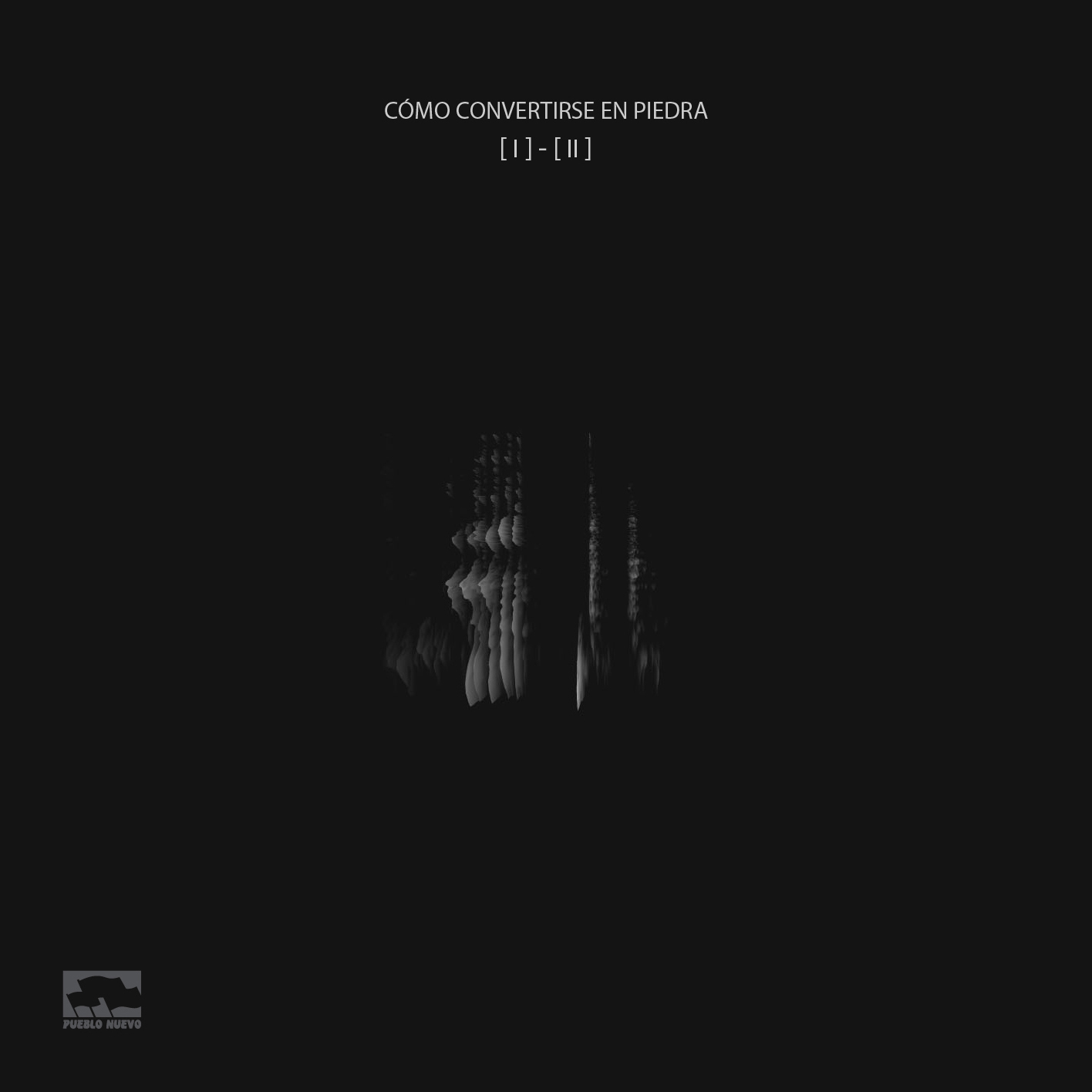Valentina Villarroel
“Como Convertirse en Piedra”
This album by the Chilean sound artist Valentina Villarroel is part of the soundtrack for a theatre play and its divided in two sections, each of which contents thirteen and fourteen tracks respectively. According to the artist, these parts are distinguishable from each other based on the sound sources from which they were born, soundscape recordings in the first case and voice fragments in the second.
The sound world that Villarroel presents in the first part is mainly compound by solid and huge blocks of sound, as a dense mist which thickness seems to contain strong forces driving its own inner flux. In fact, spoken from a spectral perspective, in spite of the presence or absence of continuity in the sounds, namely prolonged atmospheres or iterative textures, there is often a wide coverture of the frequency domain. In this way, the general sensation is to be aurally exposed to burly entities, some of them with variations on their frequency, like glissandi or a sort of melisma (applying freely this notion to these non-acoustic and non-instrumental sounds). Within these huge spectral masses, there is space for details emerging from the mist, due to the occasional density dissipation. Whenever a piece has not such a density, it is shaped by a high contrast of spectral materials or, for instance, a specific block in the low range. This is the most characteristic aspect of the set, from which the pieces show their differences, for example being sometimes rough, sometimes smoother, but always maintaining an atmospheric nature, even when a piece is shaped by repetitions of an attack-impulsion sound as in the sixth work from the first part. Accordingly, the sonic discourse is not driven importantly by other aspects such as loudness or remarkable diachronic fluctuations of sounds.Obviously, there are some exceptions like the eighth work of this first part, a construction based on the sound of flowing water, or the twelfth piece, based on a textural irregular granulation.
The second part stands out from the first one, mainly due to the voice materials which are now mostly presented in such a way we can recognize them. I can recognise what I dare to name a ‘signature aesthetic’: the strong and rough treatment of the sound material, with abrupt attacks and again spectral thickness and slight variations of loudness. For instance, complex mass impulses and iterations (in the Schaefferian terminology) dialogue with vocal samples with some repetitions produced with a classic delay effect in the second work of the second part. There is not space for delicacy.Spoken word is delivered by what it seems to be a male voice or a female voice in different tracks (with so many possible electroacoustic transformations nowadays, you never know!). Sentences are repeated, the delay plays a simple (maybe naïve) rhythmic role. There is something I found interesting: the shifts of attention produced through movements between clear semantic content and dissolution of it. Sometimes the vocal material,within a specific piece, presents a total semantic dissolution (Albornoz 2018, pp. 39-40). Classic treatments of voice recordings are present as well, such as stretching by probably a form of granular synthesis and pitch shifting, perhaps the most predictable actions in the album, at least from my point of view. Space, in general terms, both in the first part and second part of the album, is not remarkably developed and it seems to be addressed essentially by means of demure positioning in the stereo panorama and the inclusion of reverberances. Another interesting kind of material is constituted by the isolation and stretching of phonetic particles, as in the case of a fricative in the twenty-fifth piece of the second part.
Clearly functional for a theatre play, the album presents short pieces with this particular aesthetic of huge spectral densities, minimalistic approaches to sound materials and a delicate sense of variations, solid blocks of sounds shaping solid pieces which in turn make up a solid album, everything solid and poeticas it could be the transformation of a being into a stone.
Dr. Alejandro Albornoz
Compositor / Composer.
(Valdivia, Chile. Noviembre / November 2021)







